Here is the easiest way how to propagate prayer plants in water from cuttings with step by step instructions + images!
Prayer plants (common name for Maranta leuconeura) are a beautiful houseplant and are really easy to grow, keep alive, and propagate!
Calatheas and maranta plants are often referred to as Prayer Plants.
I love the variegated leaves of my prayer plant. The pink and red is really beautiful and unique. There are more than 50 varieties of prayer plants, so if you love them – collect a few!
Prayer plants are so called because the leaves often fold in half at night, like praying hands.
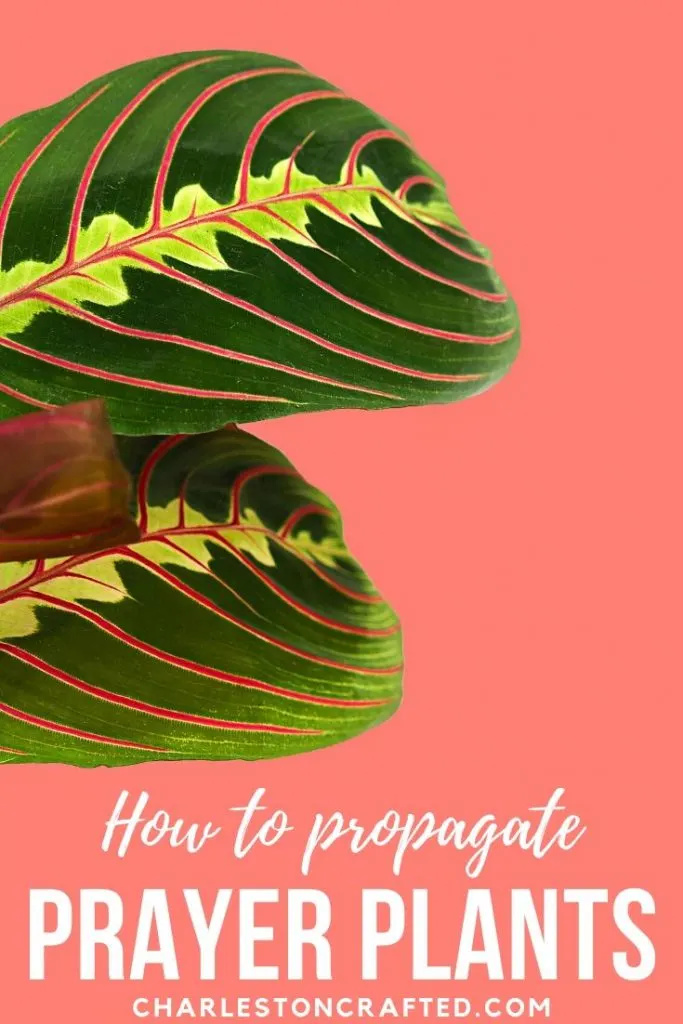
Prayer plants can grow up to 12 inches tall with leaves as long as 5 inches each!
I actually have six prayer plants – all grown from cuttings from my mom’s one plant!
The best thing about these plants is how easy they are to propagate! It’s so fun to take cuttings and root them to make new plants.
Take a few prayer plant cuttings and give it a try yourself.
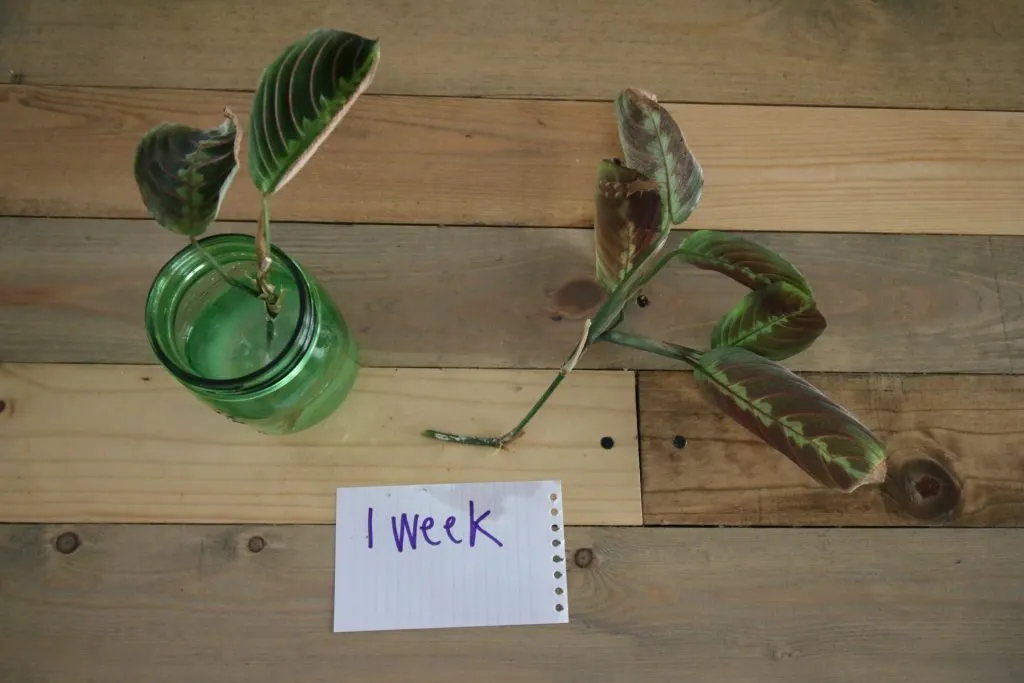
Free Printable Maranta care guide
Join the (free!) KeepYourPlantsAlive+ community to access this exclusive printable plant care guide! Once you sign up, you can right click & save the JPG care guide. Or keep scrolling for more!
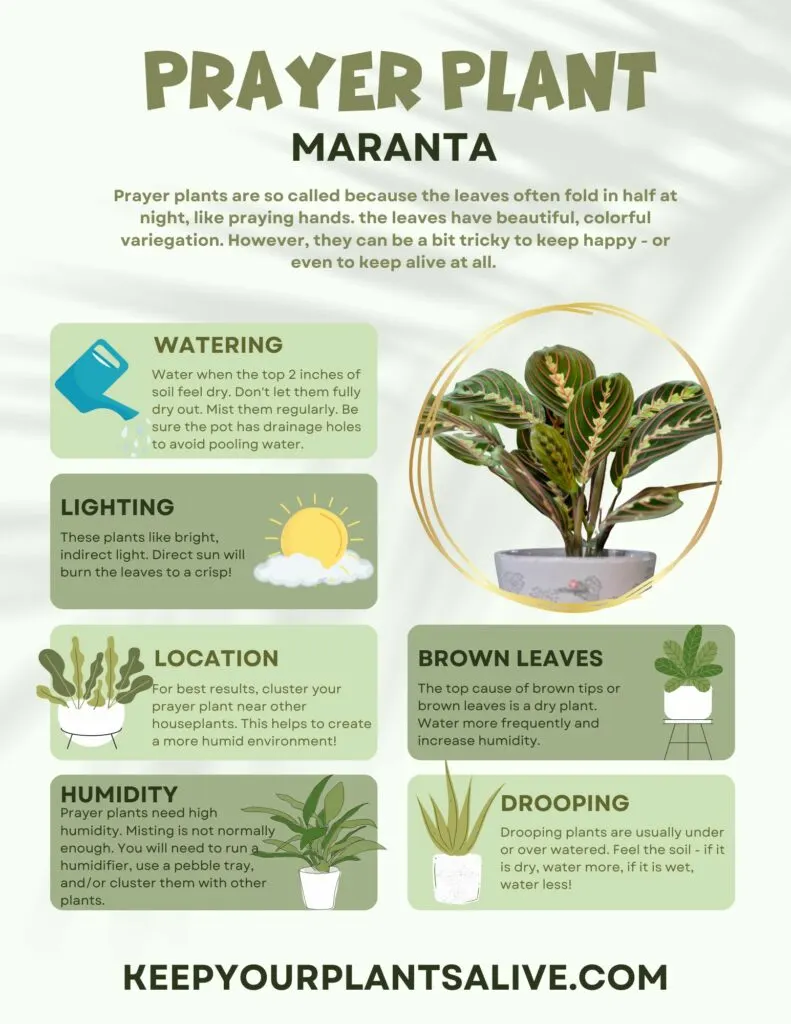
How to propagate prayer plants
It is super easy to grow these tropical plants from stem cuttings.
The easiest ways to propagate a prayer plant is:
- propagating cuttings in water
- propagating cuttings in soil
- propagation from seed
- propagation by root division
Propagating cuttings in water is the easiest way to propagate maranta and the method that I will detail below!
Where do you cut a prayer plant to propagate?
Maranta propagation is easy! The best way is to cut just below the first node of a stem. The leaf nodes are little bumps where the plant will grow roots in water.
Roots will grow from the nodes, so cutting just below them means the roots will grow at the base of your cutting.
Steps to propagate a prayer plant via water propagation
STEP 1 – Identify a node
Identify a node – a bump on the stem that leaves grow out of. Look for a branch on the mother plant at least 3 inches long with healthy new leaves and growth, for best results.
STEP 2 – cut at the node
Cut just below the node, so the node leaves the parent plant and goes onto the cutting.
STEP 3 – Remove lower leaves
Remove any lower leaves that will fall in the water. In general, I prefer to leave only 1-2 leaves per stem – you want the plant’s energy to focus on growing roots, not keeping leaves alive.
STEP 4 – place in water or soil
Wet the stem about 1 inch and dip in rooting hormone for best results.
Place the stem in water to propagate. I use this test tube wall propagation station!
If you prefer to root the plant in soil, stick it in moist soil. Place it in a warm place with bright, indirect light.
STEP 5 – cover loosely
You can also place a plastic clear bag or container (like a 2 liter plastic bottle with the top cut off) over it to create a “greenhouse,” increase humidity, and potentially speed up the rooting process.
STEP 6 – Plant in soil
Once the new roots have developed, you can plant it in a new pot of potting mix. Place the plant carefully – it prefers bright, indirect light. Water thoroughly but don’t let water sit in the soil and get soggy.
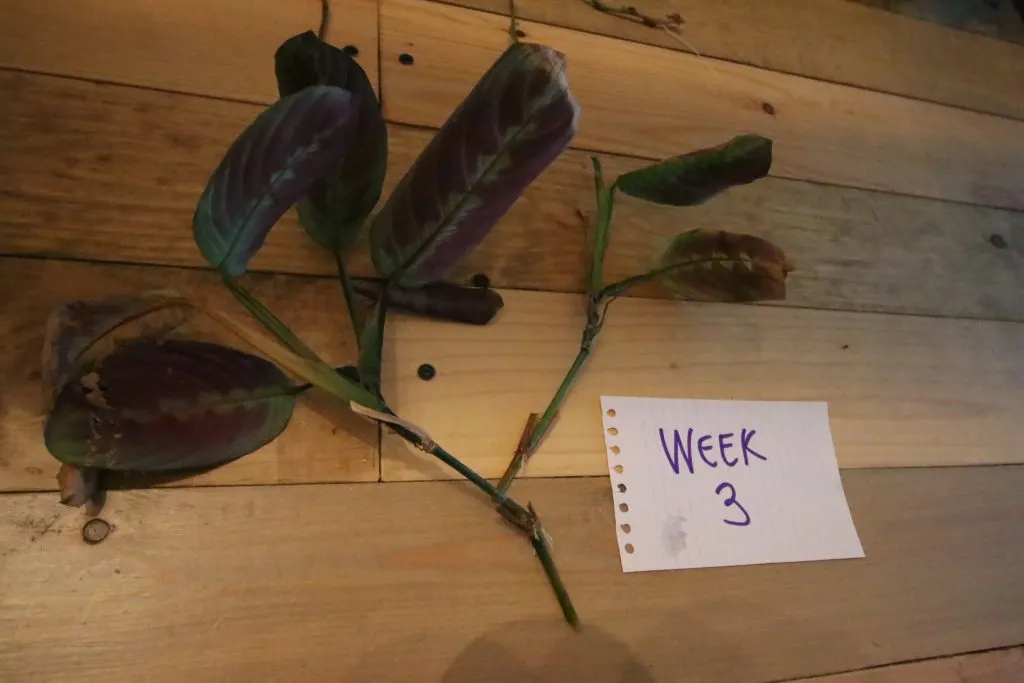
Prayer Plant Care
Prayer plants do best in bright, indirect sunlight. They do OK in low light, but flourish with indirect light.
It is important that your pot have good drainage so they do not get soggy roots after watering. Soggy roots can read to root rot. Either add lots of pebbles to the bottom of your pot or select a pot with a drainage hole.
Prayer plants prefer humidity so you can use a spray bottle to mimic that if your home is not naturally humid. Only use filtered water or rain water and room temperature water!
Other ways to encourage humidity include placing your prayer plant near other plants and placing a small bowl of water nearby.
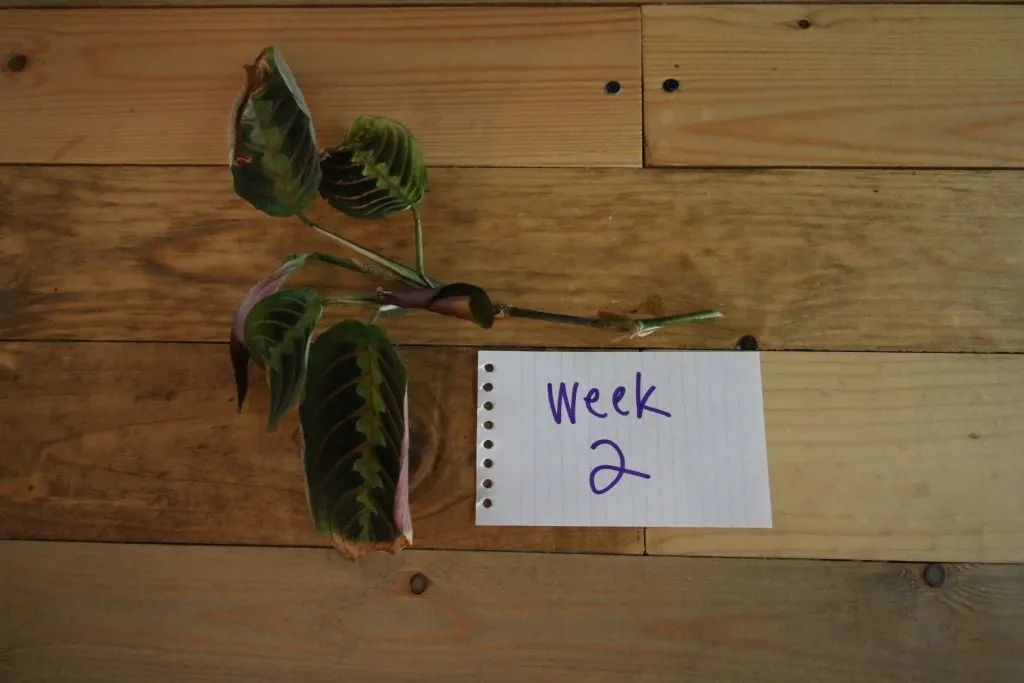
Should I mist my prayer plant?
Yes! These are tropical plants that naturally grow in high humidity areas. Misting your prayer plant gives it the humidity it craves. They need to be misted or have a humidifier to really thrive. Always used distilled or rain water as these plants can get brown spots from the fluoride in tap water.
Why does my prayer plant have brown tips?
Brown spots on prayer plant leaves are caused by either not enough water (humidity or otherwise) OR too much sun.
If your plant turns brown, look to see if the brown looks crispy. If so, it’s probably sun burn! If it’s more limp, it’s low on water!
Here is a list of other plants that grow from cuttings in water!
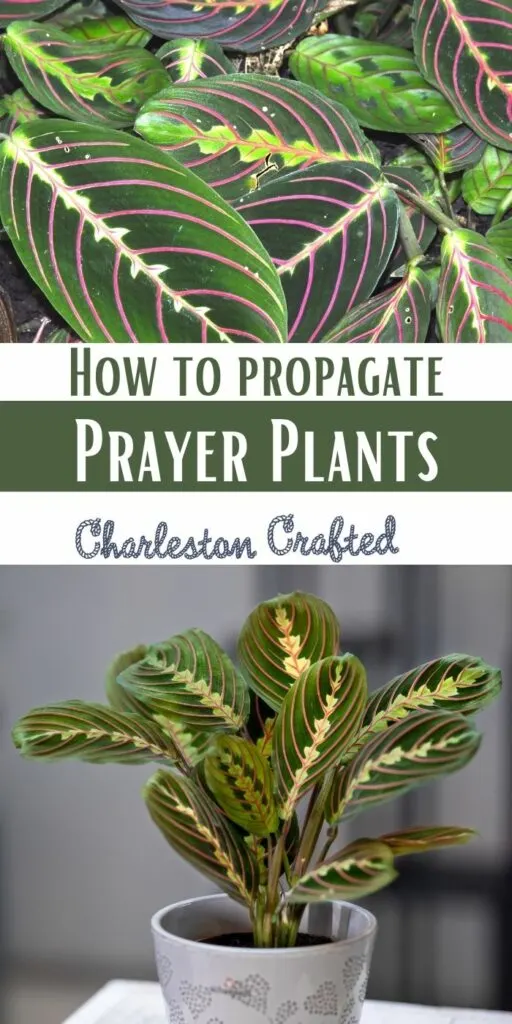
What insects get into prayer plants?
Prayer plants can house spider mites, mealybugs and aphids, so be sure to check any plants that have been outdoors before bringing them into the house.
Can I divide prayer plants?
Yes! Root division is another great way to turn a large prayer plant into multiple plants.
Simply remove your plant from its pot and gently separate the roots. Once you have broken the plant up into your desired pieces, repot in new pots!
When is the best time to propagate a maranta?
The best time to propagate plants is during their growing season – spring and summer. However, you can successfully propagate year round inside as an indoor plant!
Can you propagate a prayer plant from a leaf?
You have to have a node for a prayer plant cutting to root. Just a leaf on its own will not grow roots!
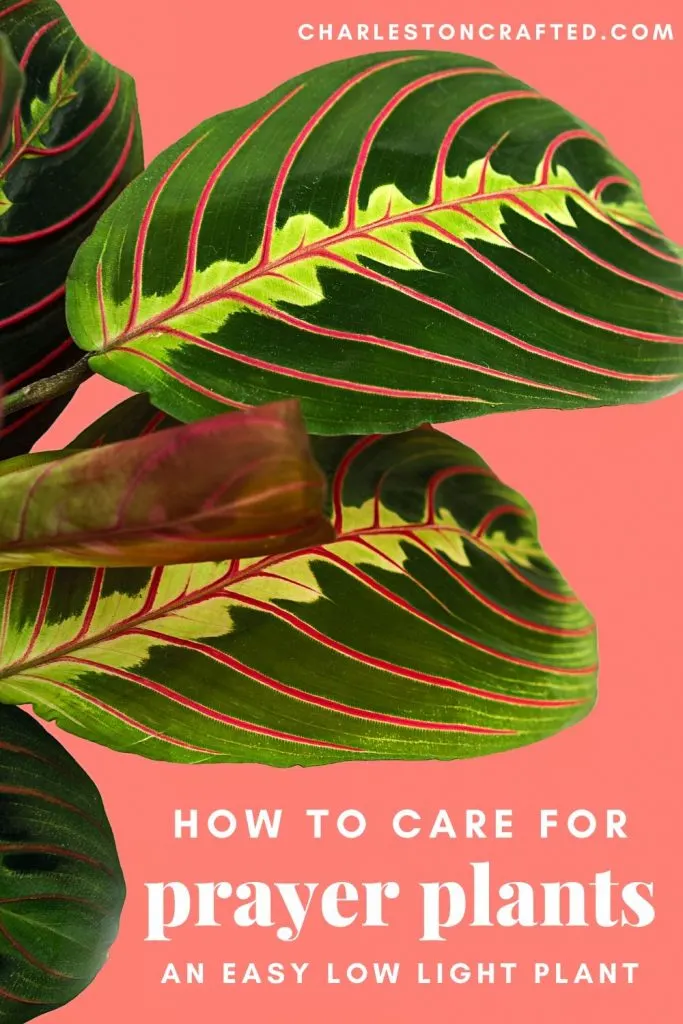
Any questions about prayer plant propagation? Time to start propagating your prayer plants!
Thanks for reading!


Hey there, I’m Morgan, a houseplant enthusiast from sunny Charleston, South Carolina. Growing up surrounded by my mom’s lush orchids and African violets, I discovered the magic of bringing nature indoors. Thanks to the pandemic, I delved deeper into houseplants, discovering their power to uplift moods and transform spaces. I’m here to spill all my secrets, helping you pick the perfect houseplant – and make it happy. Let’s keep your plants alive, together! 😊
